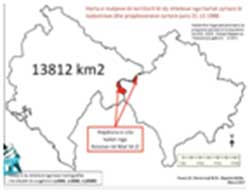Colin Todhunter
Are you being lied to or misled? Environmentalist Dr Rosemary Mason certainly thinks so and has provided much supporting evidence. She has been campaigning against the agrochemical industry for many years (all her work can be accessed here) and has borne witness to the destruction of her own nature reserve in South Wales, which she argues is due to the widespread spraying of glyphosate in the area.
In 2016, she wrote an open letter to journalists at The Guardian newspaper in the UK outlining how the media is failing the public by not properly reporting on the regulatory delinquency relating to the harmful chemicals being applied to crops (read it here). Her assertion was that not only humans and the environment are silently being poisoned by thousands of untested and unmonitored chemicals, but that the UK media are silent about the agrochemical industry’s role in this.
She has now sent a new ‘open letter’ to some major newspapers with a six-page document attached: ‘The British Government and Monsanto should stand accused of crimes against humanity’.
It has been sent to the editors-in-chief of The Times, The Sunday Times, The Telegraph, The Financial Times, The Wall Street Journal, the London Evening Standard and The Independent as well as the director general of the BBC and its senior executives. Channel 4 News (UK) reporters have also been sent the document, including senior presenter Jon Snow, and a number of prominent UK government agencies and ministers.
The document discusses the lawsuits that have recently been brought against agrochemical and seed giant Monsanto, issues surrounding the renewal of the licence for glyphosate (key ingredient in Monsanto’s multi-billion-dollar, money-spinning herbicide Roundup) in the EU, rising rates of illness and disease (linked to glyphosate and other agrochemicals), the increasing use of pesticides and the lack of adequate testing and epidemiological studies pertaining to the cocktail of chemicals sprayed on crops.
Mason feels the media should be holding officials and the industry to account. Instead, there seems to be an agenda to confuse the public or to push the issue to one side. For instance, she has in the past argued that too many journalists are reinforcing the pesticides industry’s assertion that cancers are caused by alcohol use and that the catalogue of diseases now affecting modern society comes down to individual choice and lifestyle decisions. The media constantly link alcohol consumption with various cancers and this ‘fact’ is endlessly reinforced until people believe it to be true.
This, Mason argues, neatly diverts attention from the strong links between the increasing amounts of chemicals used in food and agriculture and serious diseases, including cancers.
In her various documents, Mason has over the years highlighted how international and national health and food safety agencies have dismissed key studies and findings in their assessments of the herbicide glyphosate, and she has provided much evidence that the chemical industry has created a toxic (political and natural) environment which affects us all. She argues that these agencies are guilty of regulatory delinquency due to conflicts of interest and have effectively been co-opted, enabling companies to dodge effective regulation.
Mason has gone to great lengths to show how a combination of propaganda disseminated by industry front groups and conflicts of interest allow dangerous chemicals into the food chain and serve to keep the public in the dark about what is taking place and the impacts on their health.
Aside from the subversion of democratic procedures, the result is rivers, streams and oceans polluted with agrochemical run-offs, spiralling rates of illness among the public and the destruction of wildlife and biodiversity.
By writing to major news outlets, Mason is pressing for at least one to take up this issue and finally begin holding public officials and agrochemical companies to account. To its credit, the French newspaper Le Monde has on occasion been unafraid to report on the activities of this industry.
Regardless of industry propaganda, it is not that we need the model of agriculture that these companies profit from. The increasingly globalized industrial food regime that transnational agribusiness is integral to is not feeding the world. It is, moreover, responsible for some of the planet’s most pressing political, social and environmental crises.
There are credible alternatives that actually can feed the world equitably (see ‘United Nations: Agroecology, not Pesticides, is the Future for Food‘).
So, isn’t it about time integrity and public health took precedence over profit and vested interest?
The UN special rapporteur on the right to food Hilal Elver says:
“The power of the corporations over governments and over the scientific community is extremely important. If you want to deal with pesticides, you have to deal with the companies.”
When speaking truth to power, however, perhaps for many well-paid media personnel with careers to protect it is easier to stay silent.
